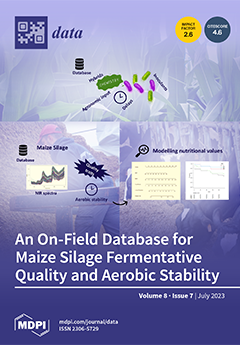Open AccessData Descriptor
PoPu-Data: A Multilayered, Simultaneously Collected Lying Position Dataset
by
Luís Fonseca, Fernando Ribeiro, José Metrôlho, Adriana Santos, Rogério Dionisio, Mohammad Mohammad Amini, Arlindo F. Silva, Ahmad Reza Heravi, Davood Fanaei Sheikholeslami, Filipe Fidalgo, Francisco B. Rodrigues, Osvaldo Santos, Patrícia Coelho and Seyyed Sajjad Aemmi
Cited by 3 | Viewed by 1404
Abstract
This study presents a dataset containing three layers of data that are useful for body position classification and all uses related to it. The PoPu dataset contains simultaneously collected data from two different sensor sheets—one placed over and one placed under a mattress;
[...] Read more.
This study presents a dataset containing three layers of data that are useful for body position classification and all uses related to it. The PoPu dataset contains simultaneously collected data from two different sensor sheets—one placed over and one placed under a mattress; furthermore, a segmentation data layer was added where different body parts are identified using the pressure data from the sensors over the mattress. The data included were gathered from 60 healthy volunteers distributed among the different gathered characteristics: namely sex, weight, and height. This dataset can be used for position classification, assessing the viability of sensors placed under a mattress, and in applications regarding bedded or lying people or sleep related disorders.
Full article
►▼
Show Figures





